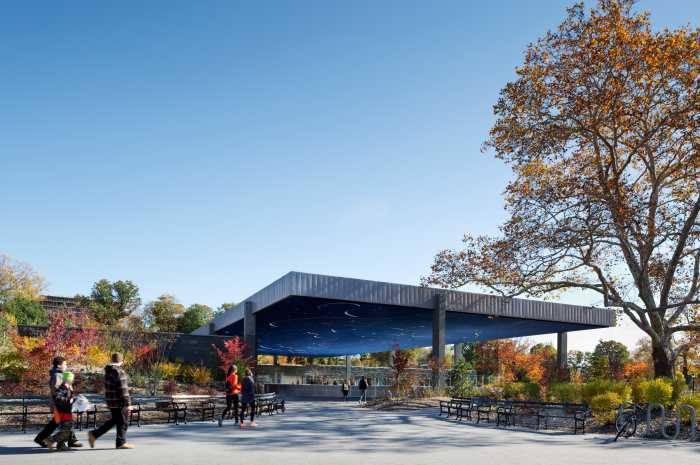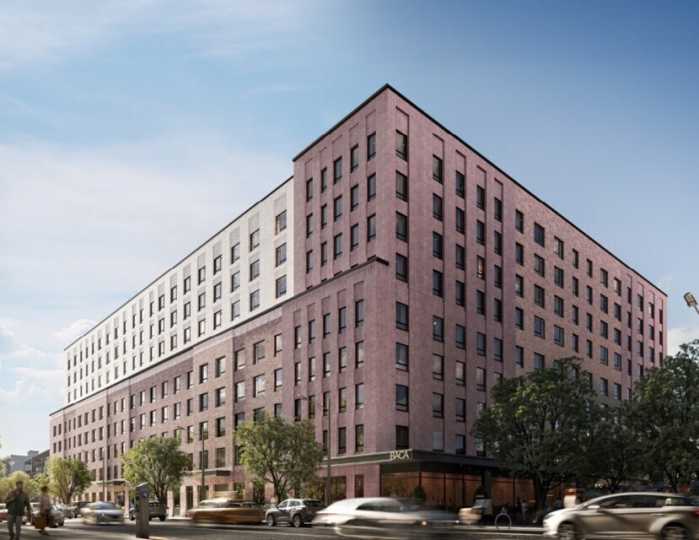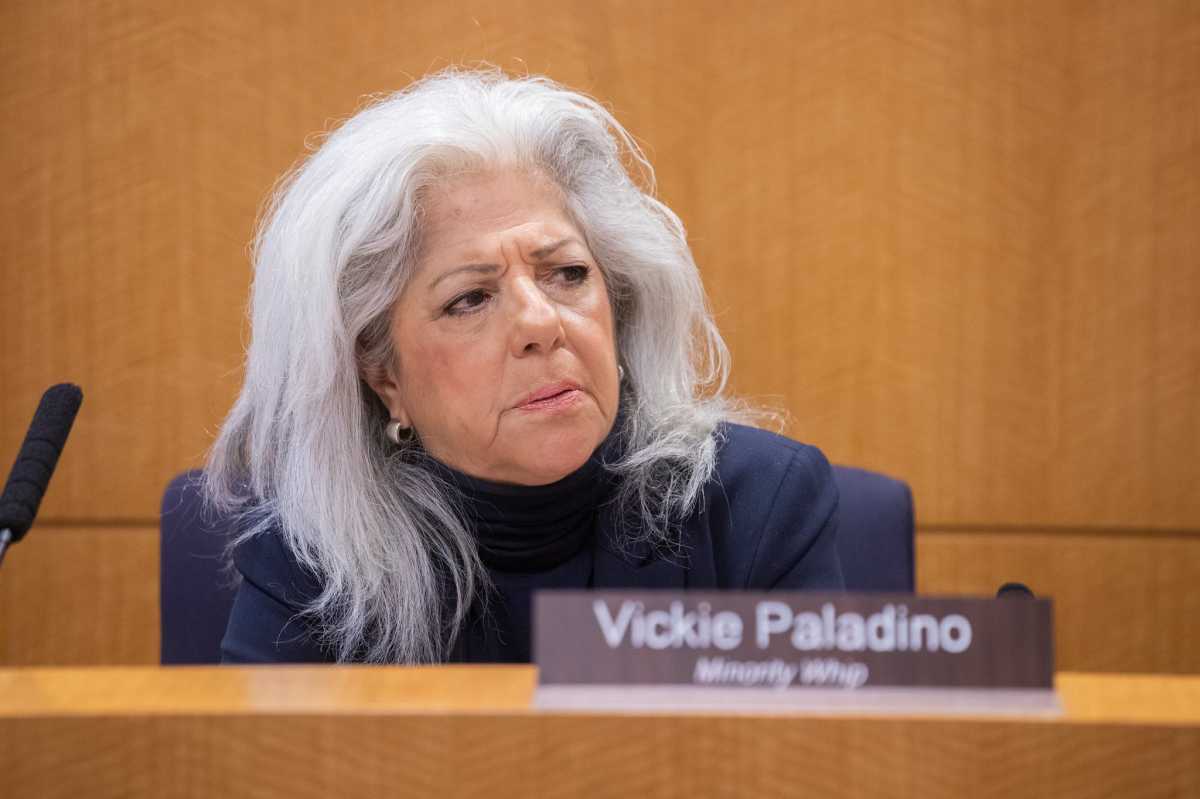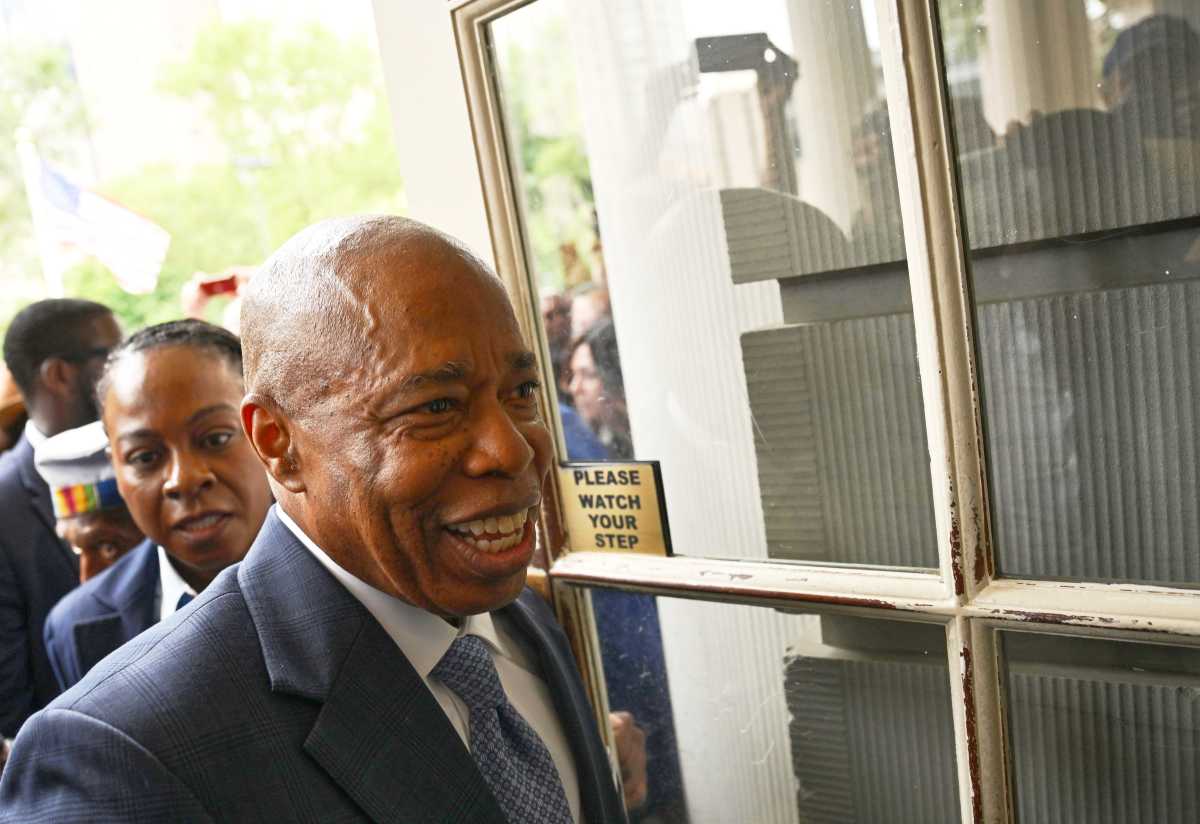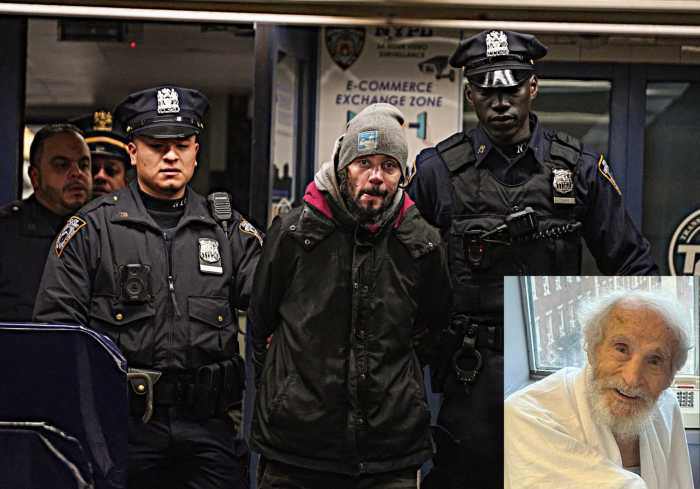If he wants to build a new home for his New Jersey Nets basketball team
atop rail yards at Atlantic and Flatbush avenues, developer Bruce Ratner
will have to pay for more than air space over the Long Island Rail Road
tracks — he’s also going to have to help pay to move those tracks.
According to an agreement negotiated among the city, state and Forest
City Ratner Companies, the developer’s Atlantic Yards plan calls
for moving the Metropolitan Transportation Authority (MTA) train storage
yards.
Forest City Ratner officials told The Brooklyn Papers that, according
to an agreement being hashed out separately with the state-run MTA, Ratner
is being asked to foot the bill.
Moving the rail yards could shift the burden of some of the potential
eminent domain property takings to a “public use,” as opposed
to Forest City Ratner’s requesting the condemnation on those blocks
for a private housing development — although the public use would
be necessitated by the private development.
Ratner seeks to build an arena for the New Jersey Nets basketball team
he purchased last summer, as well as 17 high-rises — including three
that would be the borough’s tallest — on a six-square block
parcel emanating from the crossroads of Atlantic and Flatbush avenues.
The plan includes a mix of office space, retail and as many as 7,300 units
of housing.
To build the project, the developer will need to purchase air rights over
roughly 11 acres of MTA rail yard property. The remaining 13 acres are
owned or controlled by Ratner or else are subject to state condemnation
for Ratner’s use under eminent domain laws.
The MTA did not sign on to the memorandum of understanding (MOU) agreed
to in March by the city, state and Ratner. The MTA is negotiating separately
with the developer, said Forest City Ratner spokeswoman Lupe Todd.
In discussions between Forest City Ratner and the MTA, the developer has
agreed to pay for “the entire rail relocation project,” said
Todd.
Todd said that under the Forest City Ratner plan, the rail yards would
be “reconfigured and redesigned to accommodate the future needs of
the railroad on MTA land.”
“The rail yards will move from Atlantic and Pacific, primarily between
Fifth and Carlton avenues, to primarily between Sixth Avenue and Vanderbilt
Avenue, shifting down a block,” she said.
Then the housing, instead of the arena, would be built over the rail yards.
Todd could not explain why the arena could not be built atop a platform
over the rail yards as was planned for the proposed New York Jets football
stadium on Manhattan’s West Side.
Todd called the rail-shift plan an “upgrade” that would turn
“antiquated rail yards” into “a modern, new and efficient
facility that can and will address current and future needs, with all
of the amenities that are required.”
“The city and state will grant FCRC $200 million to cover the infrastructure
needs for this project — however, there is dramatically more infrastructure
needs than the $200 million will cover,” Todd said.
That agreement is dependent upon approval of the Ratner plan by the state’s
Public Authorities Control Board.
Despite their ongoing negotiations with Forest City Ratner, the MTA on
May 18 put out an 11th-hour request for proposals (RFP) soliciting bids
from developers interested in building over the Atlantic-Flatbush rail
yards.
Neysa Pranger, a spokeswoman for the Straphanger’s Campaign, has
said the MTA cannot abdicate its responsibility to accept the highest
bidder. The transit riders advocacy group has filed a lawsuit against
the MTA for not accepting the highest bidder for similar development rights
over Manhattan’s Hudson Yards, where the New York Jets football team
and the mayor want to build a stadium.
“The only way the MTA is going to realize the full value of the [Atlantic-Flatbush]
rail yards is if they put it through a competitive bid process,”
said Pranger.
The current lawsuit challenges the MTA advisory board for discarding a
higher bid on the West Side site, which came from Cablevision, which owns
Madison Square Garden.
“A competitive bid is necessary, but is hard to do in this climate
where the power brokers are deciding who gets what,” Pranger added.
Bill Henderson, associate director of the Permanent Citizen’s Advisory
Committee to the MTA and the LIRR Commuter’s Council, said it was
uncertain how the Atlantic Yards project might effect Long Island Railroad
commuters.
“Our perspective is really the transportation end of it,” said
Henderson. “We want what’s going to work operationally for the
MTA, and what’s going to work for their customers at Atlantic Terminal
and in the larger system.
“It could have very little impact on it if it’s just a matter
of moving storage to another point,” he said, but added that space
is already tight at the LIRR station at Atlantic Terminal.
“You have limited track space and you don’t want to have to
bring everything out from Long Island to run your evening rush,”
Henderson said.
“It may not have much impact, but I don’t know that.”



